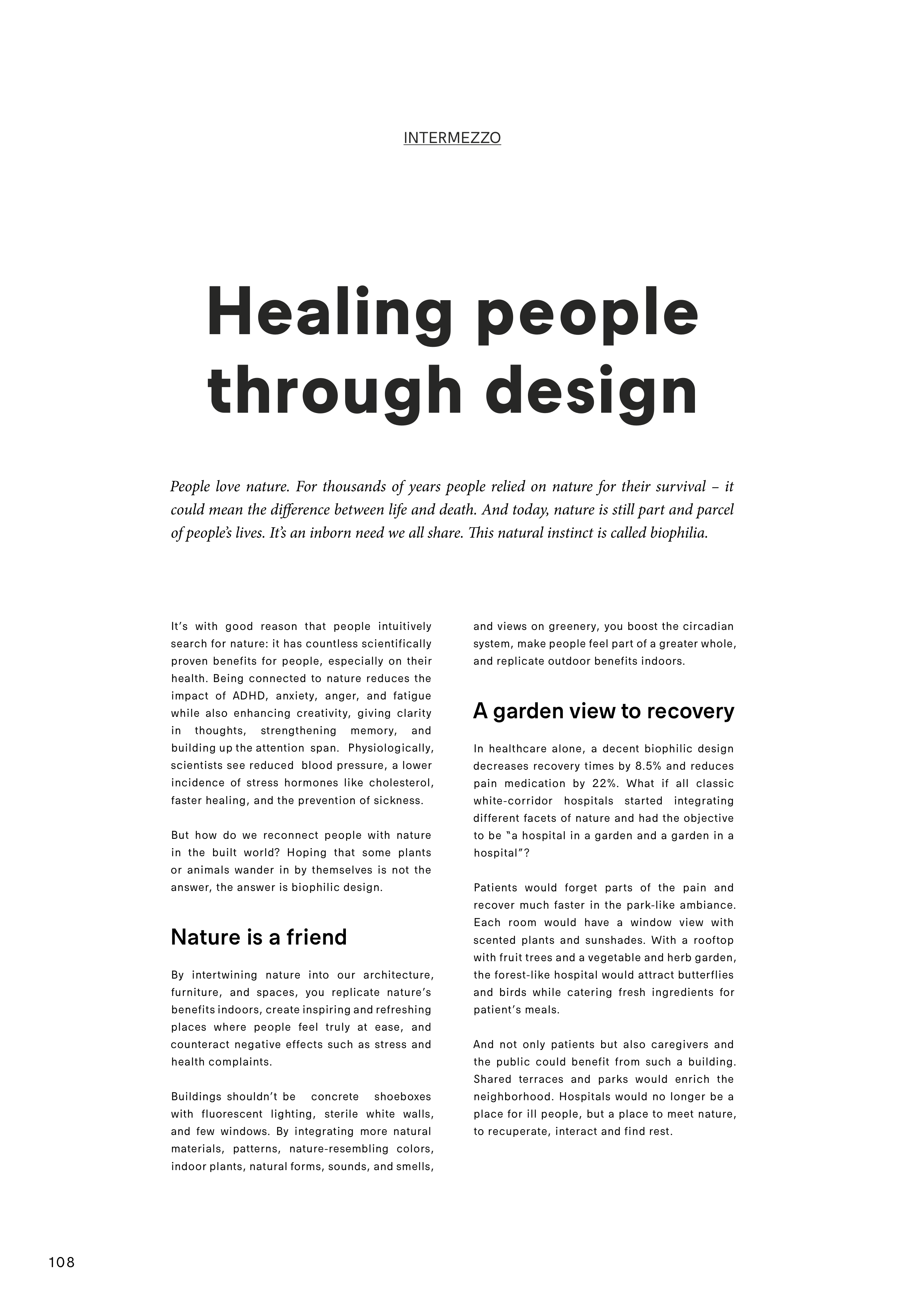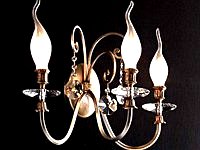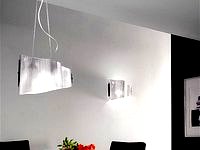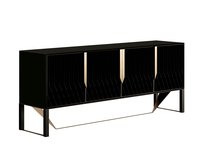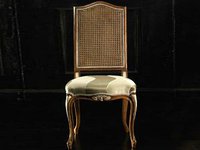108
It’s with good reason that people intuitively
search for nature: it has countless scientifically
proven benefits for people, especially on their
health. Being connected to nature reduces the
impact of ADHD, anxiety, anger, and fatigue
while also enhancing creativity, giving clarity
in
thoughts,
strengthening
memory,
and
building up the attention span. Physiologically,
scientists see reduced blood pressure, a lower
incidence of stress hormones like cholesterol,
faster healing, and the prevention of sickness.
But how do we reconnect people with nature
in the built world? Hoping that some plants
or animals wander in by themselves is not the
answer, the answer is biophilic design.
Nature is a friend
By intertwining nature into our architecture,
furniture, and spaces, you replicate nature’s
benefits indoors, create inspiring and refreshing
places where people feel truly at ease, and
counteract negative effects such as stress and
health complaints.
Buildings shouldn’t be concrete shoeboxes
with fluorescent lighting, sterile white walls,
and few windows. By integrating more natural
materials, patterns, nature-resembling colors,
indoor plants, natural forms, sounds, and smells,
and views on greenery, you boost the circadian
system, make people feel part of a greater whole,
and replicate outdoor benefits indoors.
A garden view to recovery
In healthcare alone, a decent biophilic design
decreases recovery times by 8.5% and reduces
pain medication by 22%. What if all classic
white-corridor hospitals started integrating
different facets of nature and had the objective
to be “a hospital in a garden and a garden in a
hospital”?
Patients would forget parts of the pain and
recover much faster in the park-like ambiance.
Each room would have a window view with
scented plants and sunshades. With a rooftop
with fruit trees and a vegetable and herb garden,
the forest-like hospital would attract butterflies
and birds while catering fresh ingredients for
patient’s meals.
And not only patients but also caregivers and
the public could benefit from such a building.
Shared terraces and parks would enrich the
neighborhood. Hospitals would no longer be a
place for ill people, but a place to meet nature,
to recuperate, interact and find rest.
INTERMEZZO
Healing people
through design
People love nature. For thousands of years people relied on nature for their survival – it
could mean the difference between life and death. And today, nature is still part and parcel
of people’s lives. It’s an inborn need we all share. This natural instinct is called biophilia.


